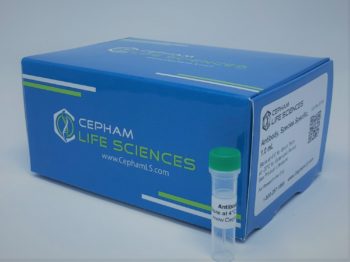Description
Aliases
Glutathione S Transferase; Glutathione S transferase Mu 1; Glutathione S-transferase class-mu 26 kDa isozyme; GST 26; GST; GST class mu 1; GST1; GSTM1 1; GSTM1a 1a; GSTM1b 1b; GTH4; GTM1; H B; HB subunit 4; MGC26563; MU 1; MU; SJ26 antigen; SjGST.
Antibody Type
Polyclonal Antibody
Uniprot ID
Gene ID: 8113787
Immunogen
Purified recombinant Escherichia coli BL21(DE3) GST protein fragments expressed in E.coli.
Raised In
Rabbit
Tested Applications
WB Recommended dilution: Western blotting: 1:10000
Background / Function
The glutathione S-transferase (GST, previously known as ligandins) family of enzymes are composed of many cytosolic, mitochondrial,and microsomal (now designated as MAPEG) proteins.GSTs are present in eukaryotes and in prokaryotes,where they catalyze a variety of reactions and accept endogenous and xenobiotic substrates.Members of the GST superfamily are extremely diverse in amino acid sequence,and a large fraction of the sequences deposited in public databases are of unknown function.The Enzyme Function Initiative (EFI) is using GSTs as a model superfamily to identify new GST functions.GSTs can constitute up to 10% of cytosolic protein in some mammalian organs.GSTs catalyse the conjugation of reduced glutathione — via a sulfhydryl group — to electrophilic centers on a wide variety of substrates in order to make the compounds more soluble.This activity detoxifies endogenous compounds such as peroxidised lipids, as well as breakdown of xenobiotics.GSTs may also bind toxins and function as transport proteins,which gave rise to the early term for GSTs of “ligandin”.The mammalian GST super-family consists of cytosolic dimeric isoenzymes of 45–55 kDa size that have been assigned to at least six classes:Alpha,Mu,Pi,Theta,Zeta and Omega.Most mammalian isoenzymes have affinity for the substrate 1-chloro-2,4-dinitrobenzene (CDNB),and spectrophotometric assays utilising this substrate are commonly used to report GST activity.However,some endogenous compounds,e.g., bilirubin,can inhibit the activity of GSTs.In mammals,GST isoforms have cell specific distributions (e.g., alpha GST in hepatocytes and pi GST in the biliary tract of the human liver).
Conjugate
Unconjugated
Storage Buffer
Purified Rabbit polyclonal in PBS(pH 7.4) containing with 0.02% sodium azide and 50% glycerol.
Form
liquid
Storage
Shipped at 4°C. Upon delivery aliquot and store at -20°C or -80°C. Avoid repeated freeze.
Purity
Affinity-chromatography
Additional information
| Size | 100?l |
|---|


